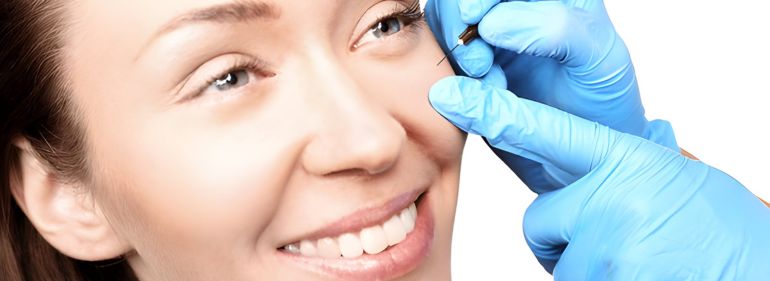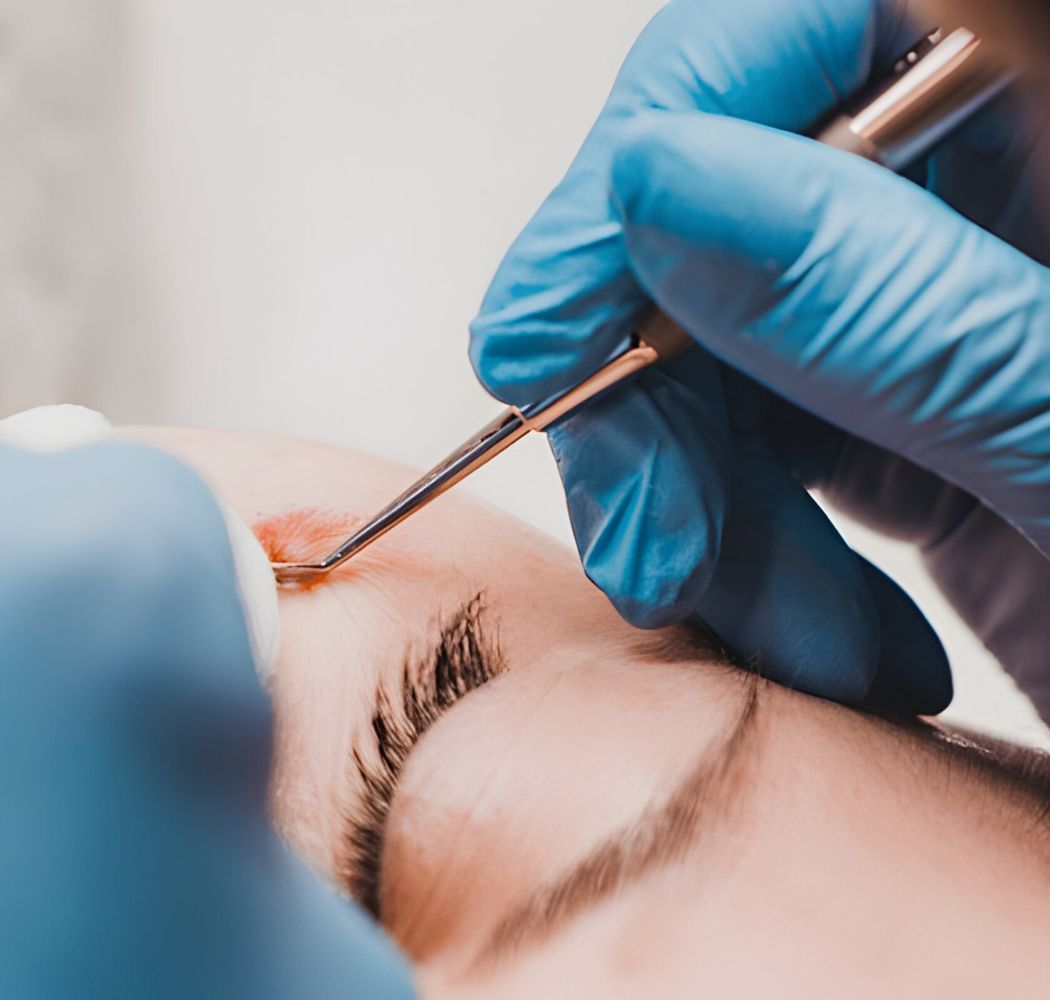- Prity Skincare Clinic
- Milia Removal
Milia Removal

Milia
Milia are small white or yellowish raised cysts, bumps or spots on the skin. They are normally found around the eye area and cheeks, but can appear anywhere on the face or body. Unlike a pimple or spot, milia feel quite hard, almost like a small piece of grit under the skin, and do not have any redness or inflammation as you might expect with whiteheads or acne-related spots. It is very common to have several milia appear in clusters on the skin around the eyes, but it is possible to have just one milium at a time and they can occur on any part of the body, including the groin and genital area.
Milia Removal

Final price will be given on the day of consultation
Exact cost of treatment will be confirmed during your consultation where we will answer questions and advise the best milia removal for your desired result.
Price: £40
(Price For Per Treatment)
Milia are caused by the build-up of keratin (a naturally occurring protein) beneath the surface of the skin. Some dermatologists suggest this could be due to damage to the sweat glands after skin trauma, or in the case of new born babies, blocked sweat glands. Cell turnover usually slows down as we get older, making mature skin more susceptible to recurring milia.
Milia are not contagious or harmful in any way, there is no known genetic link with milia and the condition is not thought to be hereditary, but some people may feel self-conscious about them, especially if they are on a visible area of the skin such as the face. Milia can sometimes take a long time to disappear naturally, but can be professionally removed through a simple, minor procedure. There are a variety of treatment options to remove Milia depending on the type, location and number of Milia that need removing
Milia are usually very small, white or flesh-coloured bumps which are firm to the touch. They have a different appearance to a pimple or spot as they don’t have a head and cannot be squeezed. They are generally not red or inflamed ) and should not feel uncomfortable or painful. They usually appear on the skin around the eyes in groups, but it is possible to have just one milium at a time and they can occur on any part of the body, including the groin and genital area.
Milia can be extracted in a small procedure. The skin is first cleansed, and a small local anaesthetic injection is placed to make the area numb. The skin over the milia is incised and the milia is removed. Stitches are not required. The procedure takes 5 minutes to an hour.
A tiny wound which is the size of a pin prick results. This scabs over and heals in 3 to 4 days’ time. A dressing is not required and the wound can be covered with Vaseline which is applied 3 times per day. You are able to return to an office job straight away.
Milia is a benign cyst caused by the protein keratin being trapped beneath the top layer of the skin. Medically it is not necessary for milia to be treated, and over a period of a few weeks or months most usually go away. However, many people choose to treat these cysts if they cause discomfort or feelings of self-consciousness.
There are numerous benefits in milia removal:
- Removes a source of irritation, while milia are asymptomatic they can itch
- Stop irritated and red skin caused by rough sheets or clothing
- Increased self-confidence; milia around the eyes can be very noticeable and make people feel self-conscious about their appearance
- Easier application of make-up and cosmetics
- Removes the appearance of acne prone skin milia be mistaken for whiteheads giving areas of the skin the appearance of suffering from acne
Removing milia yourself is not recommended. To avoid infection, the treatment should be carried out in a safe clinical environment with sterile equipment. Trying to squeeze or pick at milia can cause the area to become inflamed, bruised or infected because they do not ‘pop’ in the same way as a pimple or whitehead.
Milia are very small, about 1 or 2 mm in diameter, and bright white as they are just under the skin. Anything larger or deeper than this is not a milia. There is more information about cysts.
Many people believe eye creams, foundations, eyeliner pencils, or creamy concealers applied around the eyes cause milia under the eyes. However, this is deemed unlikely by most dermatologists as approximately 50% of babies also develop milia. If you are concerned that your skincare or beauty regime is causing milia we would recommend using alternative products to see if they improve and disappear.
Ensure you have a good skincare routine can help reduce white spots under your eyes, which should involve good quality products, regular exfoliation and wearing high factor sun protection.
Experts have identified 5 types of milia:
Neonatal milia.
Neonatal milia, often referred to as milk spots, develop in new born babies. They are very common, with up to 50% of babies developing them, and are found around the nose area but may also occur on the scalp, cheeks, upper body and inside the mouth. They are thought to arise from sweat glands that aren’t fully developed or mature. They are completely harmless and painless for the baby and usually clear up within a few weeks.
Primary milia.
A common form of milia found in children and adults of both sexes. Primary milia are caused by keratin trapped beneath the surface of the skin, often around the eyelids and forehead, due to slower natural exfoliation. They are asymptomatic, though they may itch or become irritated if rubbed against, and will disappear without treatment, though they tend to last longer in adults than in children.
Secondary milia.
Secondary milia are similar in appearance to primary millia, small white/yellow cysts approximately 1-2mm in diameter. The cysts develop in an area of skin, anywhere on the body, that has previously been damaged or injured. It can also develop after certain skin creams, such as topical steroids and penicillamine are used for a pro-longer period. Secondary milia is thought to develop as the skin heals due to the sweat glands becoming clogged in the affected area. It can occur in adults and children of all ages and both sexes.
Milia en plaque.
Milia en plaque is an extremely rare form that is commonly associated with genetic or autoimmune skin disorders such as discoid lupus. The cysts can be several centimetres in diameter and are usually seen behind the ears, but can affect the eyelids, ears, cheeks, or jaw. They develop on a distinct raised and inflamed patch of skin called a plaque, unilaterally or bilaterally. The cause for milia en plaque is not fully understood but is primarily seen in middle-aged women, though it can occur in adults and children of all ages and both sexes.
Multiple eruptive milia.
Multiple eruptive milia is an extremely rare form that appears in clusters, crops, or patches that develop over a period of time, ranging from a few weeks to a few months. The symptoms are itchy cysts that can appear on the face, upper arms, and upper half of the torso.
The removal of milia is virtually painless and there is no need to apply a numbing cream before the procedure.
There may be some slight redness to the treated area immediately following the milia removal procedure, however this subsides within a matter of hours and benefits of treatment can be noticed instantly.
Going to a regulated and qualified therapist is the best way to remove milia safely and effectively. All of our milia removal procedures are carried out in highly clinical, sterilised room with many years’ experience. We will follow strict medical protocols, which means you can be rest assured that the procedures are very safe.
You may feel like you want to cover up the white spots with makeup. However covering Milia with heavy makeup will stop your skin from shedding cells and may clog pores further, trapping keratin underneath your skin. Try to use breathable makeup, or instead of a foundation use light powder-based cover up.
Milia removal should not leave any scars or marks.
It’s likely you’ll be advised at your consultation to prepare your skin before your treatment by using a non-abrasive exfoliating cleanser and vitamin A product on a regular basis. These products will soften the skin that covers the milia, making it easier to remove and can also help prevent further milia developing.
After your milia removal your practitioner will provide you with full aftercare instructions. There may be some slight redness to the treated area immediately following the milia removal procedure, however this subsides within a matter of hours and benefits of treatment can be noticed instantly.


